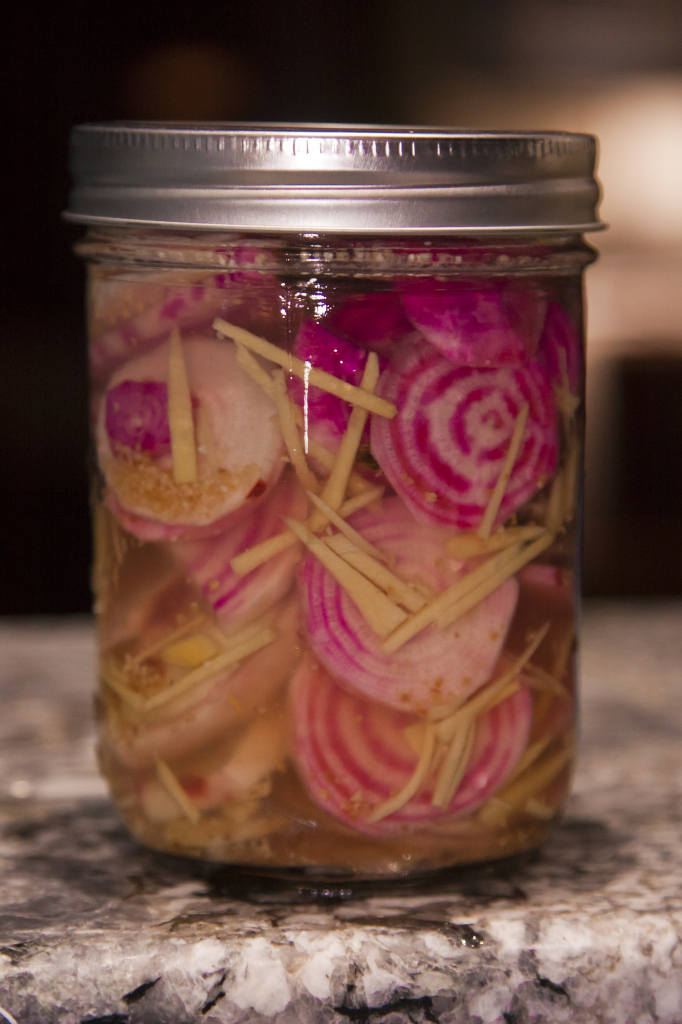 When you eat fermented food you…
When you eat fermented food you…
- save the body time digesting
- make the nutrients more readily absorbable
- promote detox
- finally give your body proper nutrition from every bite
This becomes even more important if you or your child doesn’t make enough stomach acid doesn’t really digest what is eaten.
And it becomes more important even still for those who have had a lot of antibiotics or are dealing with the autism spectrum disorder mess.
Fermented foods are shared love inside the body. A wonderful relationship between you and the helpful bacteria who serve you by digesting your food in exchange for a warm place to live. And beets are amazing in and of themselves. Read why here.
Makes 4 cups of Beets & a cup of Kvass
Ingredients
6 medium beets (trimmed, peeled and thin-sliced in 1/8-inch rounds—uncooked)
1 1-inch knob ginger (peeled and cut into very thin matchsticks or mince)
1 Tablespoon of orange zest
1 Tablespoon whole cloves
2 Tablespoons whey or juice from a prior ferment, or 1 packet vegetable starter culture, or 1 Tablespoon sea salt in 2 cups of water (brine).
Preparation
1. Toss beets, ginger, orange zest and pickling spice together in a mixing bowl.
2. Mix whey culture or vegetable starter into one-half cup filtered water. Note: if you do not use salt brine then you MUST use a culture starter or whey. I prefer the brine. Allow 2-4 days if you use a starter, 4-6 if salt brine. Note: the mix should bubble some—skim off any brown bubbles or other—don’t let go too long.
3. Layer the beet mixture into a mason jar leaving some space at the top. I recommend about an inch for quart-sized jars and less for smaller jars.
4. Pour the culture mix over the top. Add additional filtered water as needed to completely submerge the beets beneath liquid.
5. A ferment releases gas, so screw the lid on tight and invert a few times to make sure is well mixed, then loosen the lid to let the gas escape.
6. Let sit in a warm place on your counter until done, tightening the lids every couple of days and inverting to mix, then loosen the lids again.
How do you know when they are done? They are soft and taste good, not too salty. There really is no other criteria for a good ferment.
Kvass: when I originally wrote this recipe I just got so excited about the beets. it wasn’t until a client emailed me with a question about Kvass that I realized there were two amazing products in one recipe. Kvass is the liquid and forms the foundation of many probiotic drinks. Right after Denise emailed me I went to my fridge and poured a small glass–OMG this is good!! Thank you Denise!!
Copyright © 2014-20 Marie Sternquist Cecchini. All Rights Reserved







